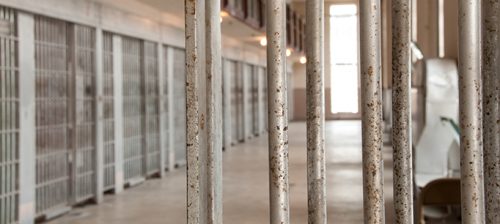

By Ghostwrite Mike & The Mundo Press
CHOWCHILLA, CA – Skrybe, a published poet and spoken word artist, is a student at Merced College pursuing his Associate of Art’s degree—using a DELL Latitude 3190 laptop to prepare his assignments, Skrybe relies on his computer to learn in an increasingly digital world.
Completing assignments using a host of Microsoft Office products, reading research articles and interacting with his professors and fellow classmates via Canvas, a modern-classroom tool, he does all of this from his cell at Valley State Prison (VSP) in California.
“I’m having an authentic, free-world college experience, despite being confined,” Skrybe remarked.
Dr. Lynne Ruvalcaba, the Division of Rehabilitative Programs (DRP) Administrator of Informational Technology, is credited for the roll out of the California Department of Corrections & Rehabilitation’s (CDCR) laptop initiative.
Valley Adult School’s Vice Principal Gaddams, who is also the local Office of Correctional Education (OCE) administrator and in charge of postsecondary education at VSP, collaboratively coordinated the facility’s first ever distribution of laptops for residents attending in-person college classes.
This implementation has enabled waves of student cohorts to engage higher-learning opportunities with access to elevated digital tools in a way many residents and educators thought was impossible in the carceral setting.
Dr. Randall Horton, the founder of Radical Reversal, a nonprofit organization that builds state of the art multimedia and recording studio spaces within U.S. prisons, heralds “the local carceral state administrators and staff who enable these progressive tech-based programs to take root, stand up, and thrive on the inside.
“They are the unsung heroes that make or break these innovative and normalizing programs. The technology piece is a key plank of the reform effort, and an imperative for the deconstruction of the status quo.”
Skrybe praised Gaddams as a tireless activator on the ground at VSP, saying “Gaddams makes it all happen here. When they first distributed the laptops, it was he, who, all by himself, was pulling up on us outside of our buildings at breakfast, dragging around this massive cart stacked high with laptops, in order to distribute them to us on time. He was still passing them out after dark that night, without help, after all the education staff had long since gone home.”
Skrybe continued, “He troubleshoots everything, organizes our registrations, backfills the class openings when students drop courses, and makes unbelievable time for us. When a Vice Principal leaves his air conditioned office to stand outside in the sun with us to answer our never-ending questions for so long that when he walks away his shirt is sticking to him in several visible areas, you know he’s committed to his job.”
In spite of the enabling gift of accessibility laptops afford VSP residents, there are still related issues Skrybe and other residents feel CDCR needs to address, including how there seems to be an effort to prevent the public from seeing residents actually using the laptops.
Indeed, the policy at VSP concerning what residents are allowed to wear and hold while taking photos in the yard specifically prohibits what are referred to as “props” in those photos.
This prohibitive language means a resident cannot wear or hold works of art, crafts, musical instruments, diplomas, certificates, their GTL/ViaPath tablets, or their laptops despite these items being approved for possession.
Skrybe, a published Prison Journalism Project poet, member of the Broken Soulz hybrid-spoken-word ensemble and facilitator of the Barz Behind Bars (B³) poetry workshop, is an outspoken critic of mass incarceration and studies how media is used to shape cultural norms.
He opined that “it’s as if CDCR doesn’t want the normalization effect of this technology to penetrate the public psyche or something. The only time you see any of us in the frame with a computer at all, is when it’s a desktop. The only time you see a photo of a laptop or approved tablet device inside a prison, is without any of us holding or using it—why is that?”
“I signed a $300 trust withdrawal making me accountable for the laptop if I break it, so why can’t I take a photo with it in my hand? I am similarly obligated for the tablet device, so, in terms of non-contraband items, how does the laptop differ from say, a portrait I drew that I can’t take a picture of in a photo I pay for?” he added.
Another VSP resident, Savage, commented about not being “able to take a photo with my bandmates playing or holding our instruments under these prohibitions, which completely prevents me from memorializing my creative arts lived experience. None of it makes sense. Tell me, why the only photo I’ve ever seen of an incarcerated person with a GTL/ViaPath tablet device (was a) photo accompanying Pulitzer Prize-winning historian Heather Ann Thompson’s 2021 ‘Behind The Wall’ piece in Time magazine, showing the Westville Correctional Facility uprising in Indiana?”
If technology is the practical bridge by which academic normalization is achieved, then why can’t the public see residents using the laptops Dr. Ruvalcaba proudly espouses on the CDCR Unlocked podcast?
If technology is the practical bridge by which familial communication is achieved, then why is the public prohibited from seeing residents using the tablets the California legislature voted and funded to enable our free outbound phone calls?
If items are approved for possession and use by residents, and residents pay for their own photos, then why can’t the items they create, possess, and use be photographed?
In spite of the net positive that laptops and tablets represent for stakeholders, other curious questions abound. Normalization requires logical solutions to illogical problems.
